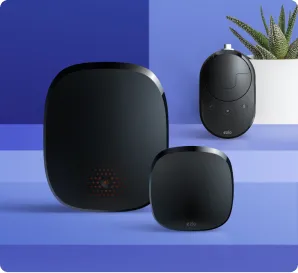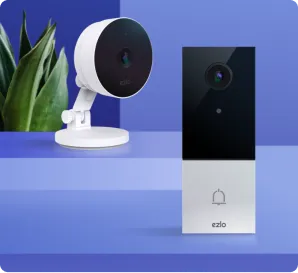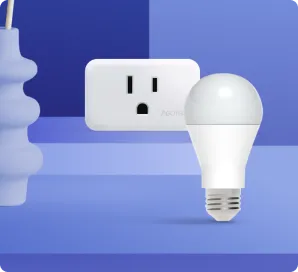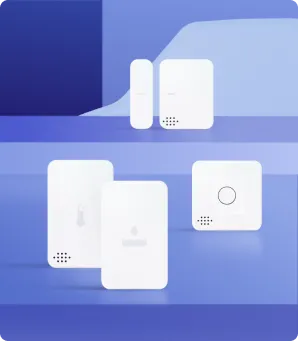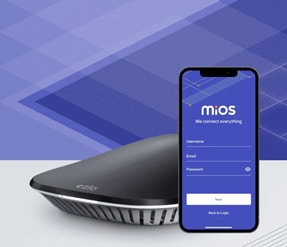Smart homes have become increasingly popular, offering homeowners many features and benefits. From controlling lighting and temperature to managing security systems and entertainment devices, smart home technology has transformed how we interact with our living spaces. But while these advancements have undoubtedly improved convenience and efficiency, they also have the potential to enhance accessibility and inclusivity for people with disabilities.
Accessible Home Needs
Before making your smart home more accessible, it’s essential to understand the diverse range of accessibility needs that individuals with disabilities may have. Disabilities, including visual, auditory, mobility, and cognitive impairments, can vary greatly. Each disability presents unique challenges and requires tailored solutions. By considering the specific requirements of different disabilities, you can ensure that your smart home is genuinely inclusive.
Smart Lighting and Visual Accessibility
Lighting is crucial in creating an accessible home for individuals with visual impairments. Smart lighting systems offer numerous features that can significantly improve the quality of life for people with visual disabilities.
One of the most essential considerations is voice control. By integrating voice-controlled lighting systems, individuals with visual impairments can easily control and adjust lighting levels, colors, and ambiance using voice commands. This eliminates the need to locate and operate physical switches or remotes.
Motion sensors are another valuable addition to a smart home for people with visual impairments. By installing motion sensors, you can automate lighting in specific areas of your home, ensuring that lights turn on automatically when someone enters a room. This feature mainly benefits individuals with mobility impairments, eliminating the need to operate light switches manually.
Color coding is a simple yet effective strategy for enhancing visual accessibility in your smart home. Assigning specific colors to different areas of your home can help individuals with visual impairments navigate more easily. For example, you can use other colored smart bulbs or indicators to distinguish between rooms or areas. This visual cueing can significantly assist people with visual disabilities to orient themselves within the space. You can integrate smart bulbs into your Ezlo Plus to send notifications when the lights are on or off to alert loved ones of occupied areas.
Audio Systems and Hearing Accessibility
Smart homes can also be tailored to accessible homes with hearing impairments. By incorporating accessible audio systems, you can create a more inclusive environment that ensures everyone fully engages with their surroundings.
Visual alerts are a valuable feature for individuals with hearing impairments. Connecting your smart home system to visual alerts such as flashing lights or vibrating devices lets you notify individuals of actual events like doorbells, phone calls, alarms, or smoke detectors. These visual cues serve as alternatives to traditional auditory signals and ensure that individuals with hearing impairments are not left out of important notifications.
Another critical consideration is closed captioning. When using smart TVs or media devices, enabling completed captioning features ensures that individuals with hearing impairments can enjoy movies, shows, and other content fully. This feature not only enhances accessibility but also promotes inclusivity by allowing everyone to engage with the same media content.
Voice recognition and transcription features can also greatly benefit individuals with hearing impairments. By integrating voice recognition capabilities into your smart home system, individuals with hearing impairments can interact with voice assistants or communicate via text messages. This provides an alternative communication means to ensure their voices are heard and understood.
Mobility Assistance and Smart Home Automation
For individuals with mobility impairments, smart home automation can be life-changing. Incorporating features that increase independence and convenience makes your accessible home more comfortable and user-friendly.
Smart locks and doors are essential elements of an accessible smart home. By installing smart locks and automated doors, individuals with mobility impairments can easily open and lock doors without physical exertion. These systems can be controlled remotely, allowing individuals with limited mobility to enter or exit their homes quickly.
Motorized blinds and curtains are another valuable addition. These automated window coverings can be controlled and automated by connecting them to your Ezlo Plus. Enabling individuals with limited mobility to adjust natural lighting levels without manual effort. This feature not only enhances accessibility but also promotes comfort and convenience for all home occupants.
Voice-activated appliances are an excellent way to make everyday tasks more accessible for individuals with mobility impairments. Integrating appliances such as thermostats, ovens, and coffee makers into your smart home system allows individuals with limited mobility to control these devices independently from one app. This eliminates physical interaction and ensures everyone can enjoy these appliances’ benefits.
Cognitive Accessibility and Simplified Interfaces
Individuals with cognitive disabilities may face challenges regarding complex interfaces and overwhelming technology. To enhance cognitive accessibility in your smart home, consider implementing strategies that simplify interactions and reduce cognitive load.
Opting for user-friendly smart home hubs and devices with simplified interfaces is crucial. Avoid complex menus and settings, and focus on intuitive controls and clear visual indicators. This ensures that individuals with cognitive disabilities can easily navigate and interact with the accessible home.
Routine automation is another valuable strategy for promoting cognitive accessibility. By setting up routines or schedules within your smart home system, you can automate repetitive tasks such as turning on/off lights at specific times. This reduces the need for constant decision-making and cognitive effort, making the home environment more predictable and manageable for individuals with cognitive impairments.
Voice reminders and prompts are potent tools for providing guidance and assistance to individuals with cognitive disabilities. By utilizing voice reminders, you can help individuals stay on track with daily routines and essential tasks. These reminders can include medication schedules, appointment reminders, and task notifications, providing valuable support and promoting independence.
Conclusion: Embracing Inclusivity in Smart Homes
Creating an accessible home that is a smart home is not just about convenience; it’s about fostering inclusivity and improving the quality of life for individuals with disabilities. By understanding the unique needs of people with disabilities and implementing the appropriate technologies and features, you can transform your smart home into a space that promotes independence, accessibility, and comfort for all.
Embrace the power of smart home technology for people with disabilities and make your accessible home today. Consider the specific needs of individuals with disabilities, such as visual, hearing, mobility, and cognitive impairments. Implement voice control, motion sensors, color-coding, visual alerts, closed captioning, voice recognition, smart locks, motorized blinds, simplified interfaces, routine automation, and voice reminders.
By taking these steps, you can create a smart home that is genuinely inclusive and accommodating for individuals with disabilities. Let technology be a force for positive change, breaking down barriers and empowering individuals to live more independently and comfortably in their accessible homes.

